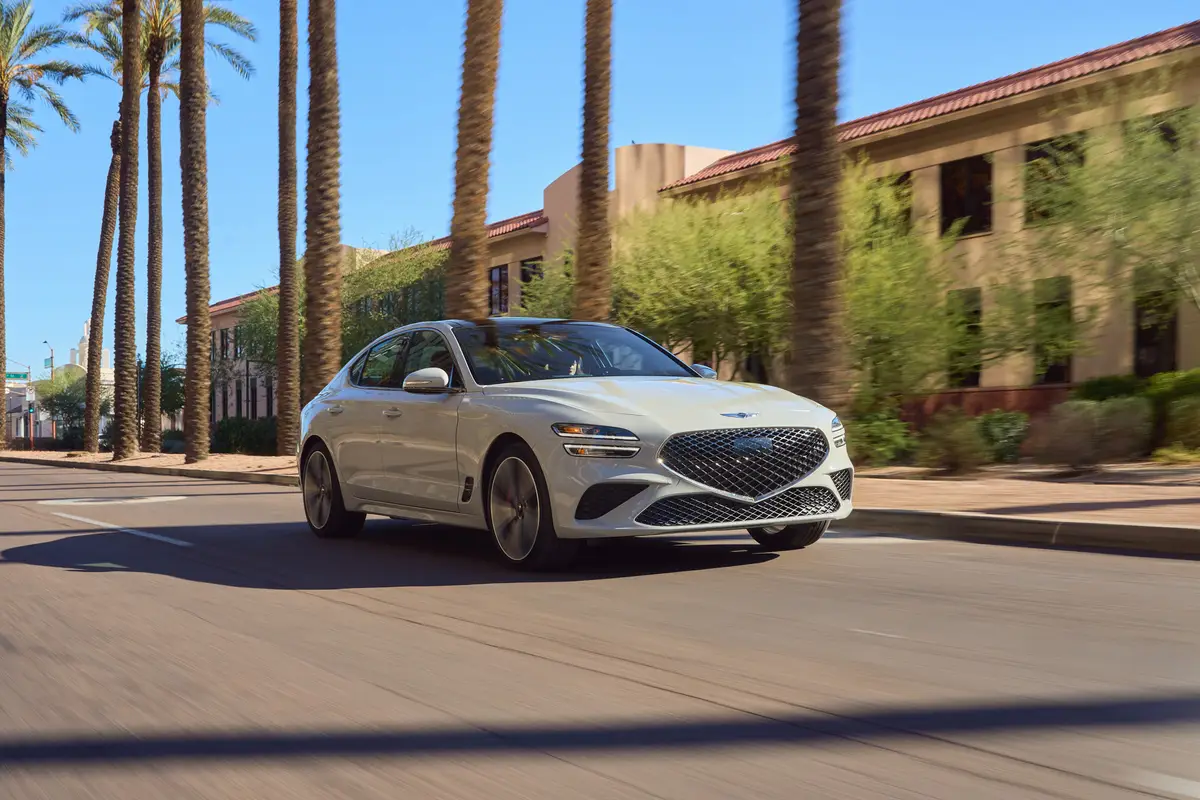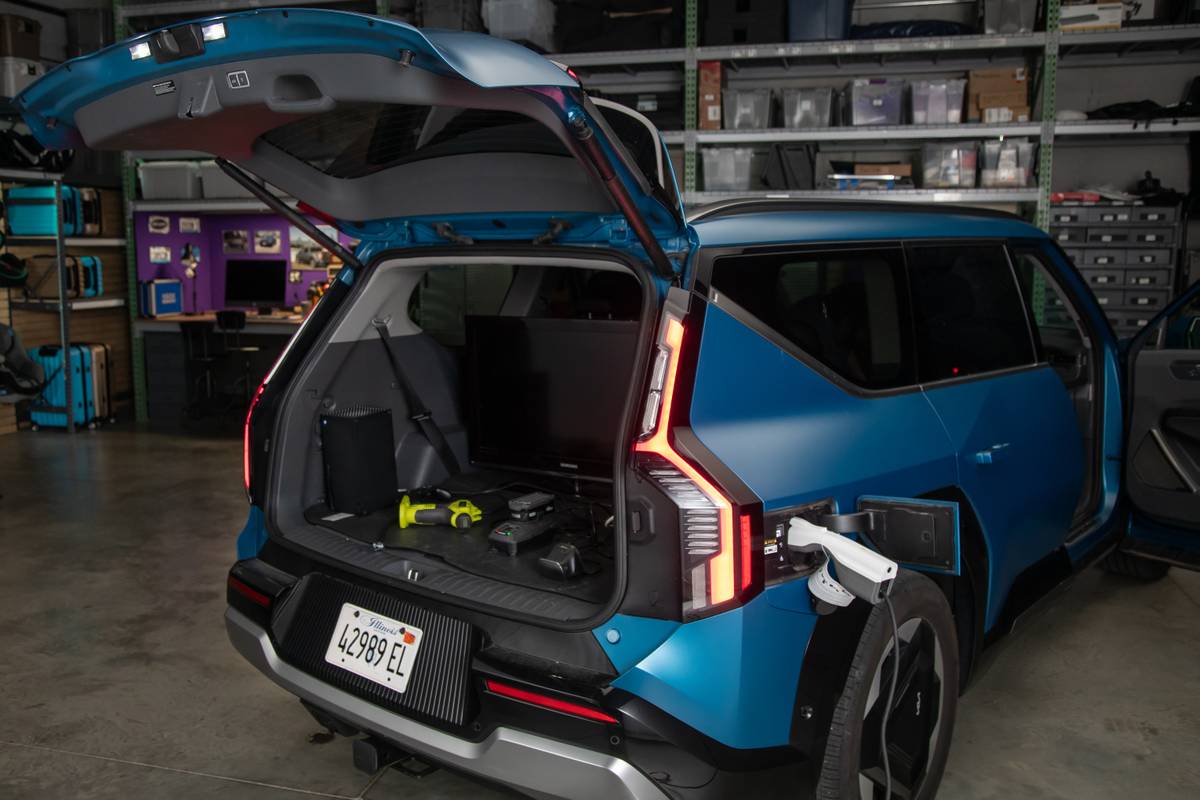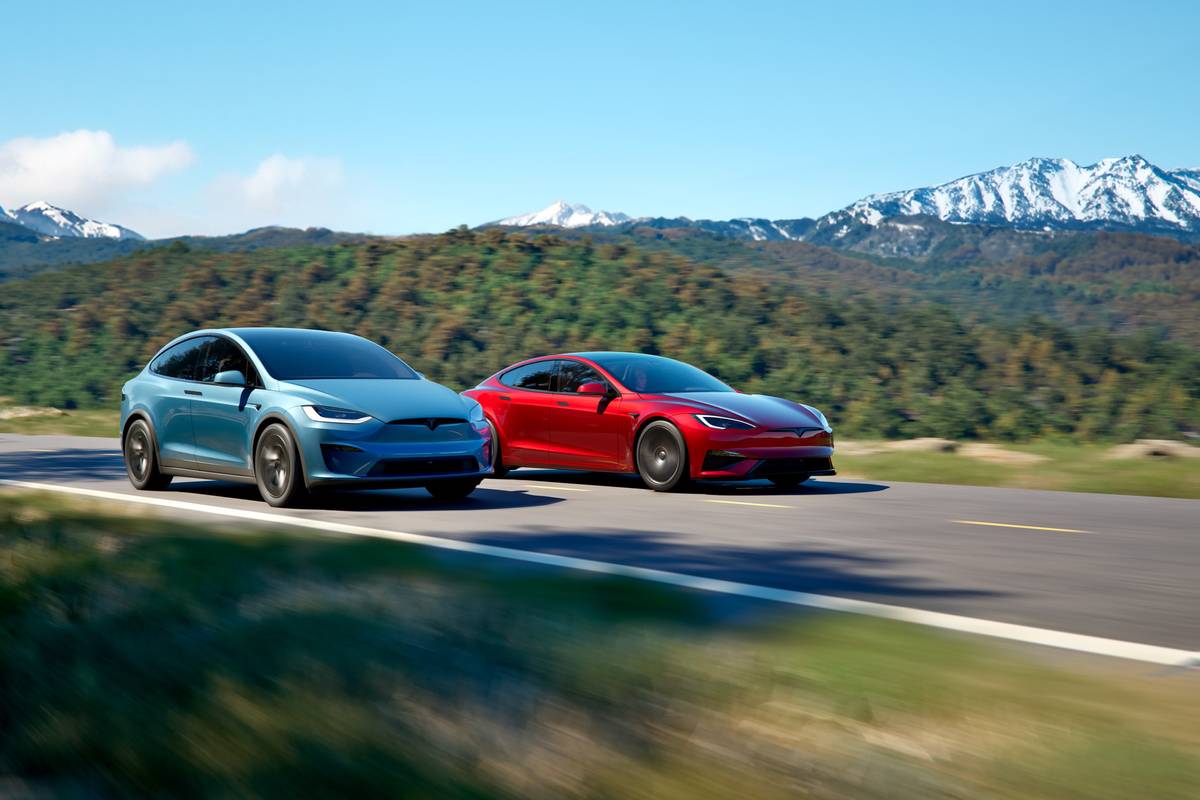Cincinnati.com's view
It would be easy to be seduced by the looks of the Infiniti G35 coupe; it IS an original shape like no other – almost breathtakingly beautiful, and it presages the appearance of the eagerly-anticipated “Z” car redivivus.
It needs no advocate; I come to speak on behalf of its sister ship, the G35 sedan. Far from an ugly duckling itself (though I think they’d do well to refashion the front bumper), the sedan offers bags of driving fun and could actually seat four humans – that being just one advantage of the four-door configuration.
It also gives you a much greater overall cabin capacity (98 cubic feet vs. the 86 of the coupe). The 14 percent jump in volume mostly benefits the folks in the rear; the flight deck is actually just a tad smaller in key dimensions. Trunk volume jumps to a normative 14.8 c.f., vs. a stingy 7.8.
In what counts, though, for a driver who enjoys driving, the sedan gives away little to its little sister.
For openers, it is rear-wheel-drive, just like the Big Two Germans. And it is propelled by a nicely-tweaked version of the familiar 3.5-liter V-6. Yeah, I realize that the coupe version of the engine is rated at 280 hp and 270 foot-pounds of torque, while the sedan has merely 260 in each category. Assuming that’s true (and they only have to quote what the laziest engine will produce AT LEAST, though such a modest difference could be accounted for by different exhaust pipe routing and less-restrictive mufflers), at best it’ll give the coupe a few tenths of a second advantage at the drag strip.
In the real world, the day-to-day convenience of the quattroporte configuration would outweigh that stat, I believe.
The figure I logged – 0-60 in 6.2 seconds on not the most adherent surface – makes the car feel rocket-propelled and will test your impulse control every time you hit the road. At least a sedan doesn’t shout, “Look how fast I can go, officer.” (The G35 is a slightly faster sprinter than the BMW 330i – now that would make for some fun drags, although the Bimmer might pull away on the twisties, just because its more direct steering feel inspires more confidence).
The G35 was one of those cars that made me sit up and take notice the first time I eased it into a hard turn. After gaining the assurance that comes with familiarity, I was no longer prone to treating it so gently. This is good stuff, ready to rumble.
The G35 is available with a close-ratio 6-speed manual transmission for those who want to work at wringing the ultimate performance from it. For most of us, though, I think the 5-speed automatic that came with the tester would serve quite well, especially for those condemned to enduring traffic jams. All the more so since it has a smooth, manual-shift capability.
I found the shifting smooth and rapid, even when I threw some curves by getting on and off the power in an atypically-jerky manner. There was some hesitation when I forced downshifts from second to firs t, but that’s fairly common and not a situation one encounters much.
Gear ratios are quite close, as one desires in a hard-driving machine, with overdrive producing only an 83 percent reduction with reference to the 1:1 ratio fourth supplies.
The all-aluminum engine is a beaut – with continuously-variable timing of the 24 valves, it is more obliging than the maximum output curves might suggest. It doesn’t lug even at 1,000 rpm, and starts to respond with some interest around two grand, building to an exhilarating surge and feral shriek as the tachometer needle passes 5,000 on its way to electronically-enforced redline at 6,600. The muffler is a two-way design, with electric actuation of a valve to allow better flow at high engine speeds – an unusually attentive (and rare) design feature.
Is it any surprise such hot stuff wants to be fed the best? One way the power gets so lusty is through a 10.5:1 compression ratio, which creates a craving for octane. After devouring a few curves, you won’t begrudge the patrician taste.
EPA ratings on the automatic-equipped car are 19 mpg city, 26 highway. I managed 23.8 largely in rapid transits through the countryside in Indiana and Kentucky.
With its inherently good handling (independent, multilink suspension front and rear), this car doesn’t need the Vehicle Dynamic System (VDC) except to protect drivers whose reach exceeds their grasp. Also known as a stability control system, the increasingly-common add-on uses the wheel sensors provided for the antilock braking system in conjunction with yaw and steering sensors to keep the instantaneous steering angle within the bounds of the physically possible. I.E., if the driver tries to corner harder than the friction of the moment allows, the VDC sends a message to one or another brake to put a halt to the nonsense. A professional driver on a closed track, as they say in the commercials, found it a bit intrusive when pushing the car beyond all reason – which is perhaps as it should be.
Traction control is also standard and comes into play when a heavy throttle press threatens to break away the rear tires. It is quite intrusive, even with the automatic, but would serve well on slick pavement, where rear-drive cars have the inherent disadvantage of having lighter loading on the driving wheels than front-drive cars. Infiniti notes that the weight distribution of the G35 was deliberately designed to be 52 percent front, 48 rear – not the “perfect” ratio some strive for, because, they say, the ratio will change on acceleration, pushing the center of gravity aft. Seems a bit precious to me, but shows how much thought they gave this sled.
Another area they bore down on was aerodynamics. The G35, despite its somewhat boxlike configuration, boasts an extraordinarily low drag coefficient of 0.27 – 0.26 with the optional rear spoiler – and zero lift at speed. This helps mileage and acceleration of course, and also makes the cabin quite quiet at freeway speeds.
The brakes are fairly large vented discs, front and rear, and with electronic brake force distribution as well as a brake assist feature, produced exceptionally fine deceleration. Stopping distances were in the sports car range, without a hint of fade in successive “panic” stops from 70 mph. The brake pedal seemed a little touchy, but with results like that, who cares.
The best part of the G35 story is that it comes very well-equipped (even with scrumptious leather seating) at just $28,950, sans freight. Some have criticized the G35 interior for being insufficiently luxurious. Count me out of that chorus. Nissan/Infiniti has wisely decided to make it businesslike, a la Mercedes and BMW, but nearly so industrial as the two Teutons. I found it a tidy model of restraint. If you prefer more luxury than sport, move across the showroom and check out the I30.
O verall fit and finish are quite in accord with the designation “low-end luxury”. You might be tempted to add some of the items the press fleet coordinator did to the tester. The $2,200 “premium package” adds a 200-watt Bose stereo as an upgrade to the standard 120-watt AM-FM-CD-cassette rig, along with reclining rear seats, driver’s seat memory and exit assist, power passenger’s seat, Homelink remote control system and dual temperature control, auto-dimming rearview mirror and one-touch power windows.
The “sport-tuned suspension package” ($425) adds specific alloy wheels, sport-tuned shocks and springs and titanium-colored interior trim. The “winter package – sport” ($600) brings heated front seats and outside mirrors and a full-sized spare. A power moonroof is $1,000; xenon high-intensity headlamps are $550, and a navigation system is $2,000.
I would vote for the high-powered headlamps, the suspension package – which does not make ride quality unpleasant – and the moonroof. The premium package seems rather overpriced and the nav system would be of interest to few, I suspect, except pizza delivery persons. You could buy a lot of maps for that kind of loot.
Equipped as described, the tester was, with freight, $36,270. Payments at that price would be $735, assuming 20 percent down, 10 percent interest and 48 payments. Edmunds.com surveys show most folks are able to wangle modest discounts from manufacturer’s suggested. If you can resist the admittedly desirable add-ons, you’d have an extraordinary value.
Latest news



